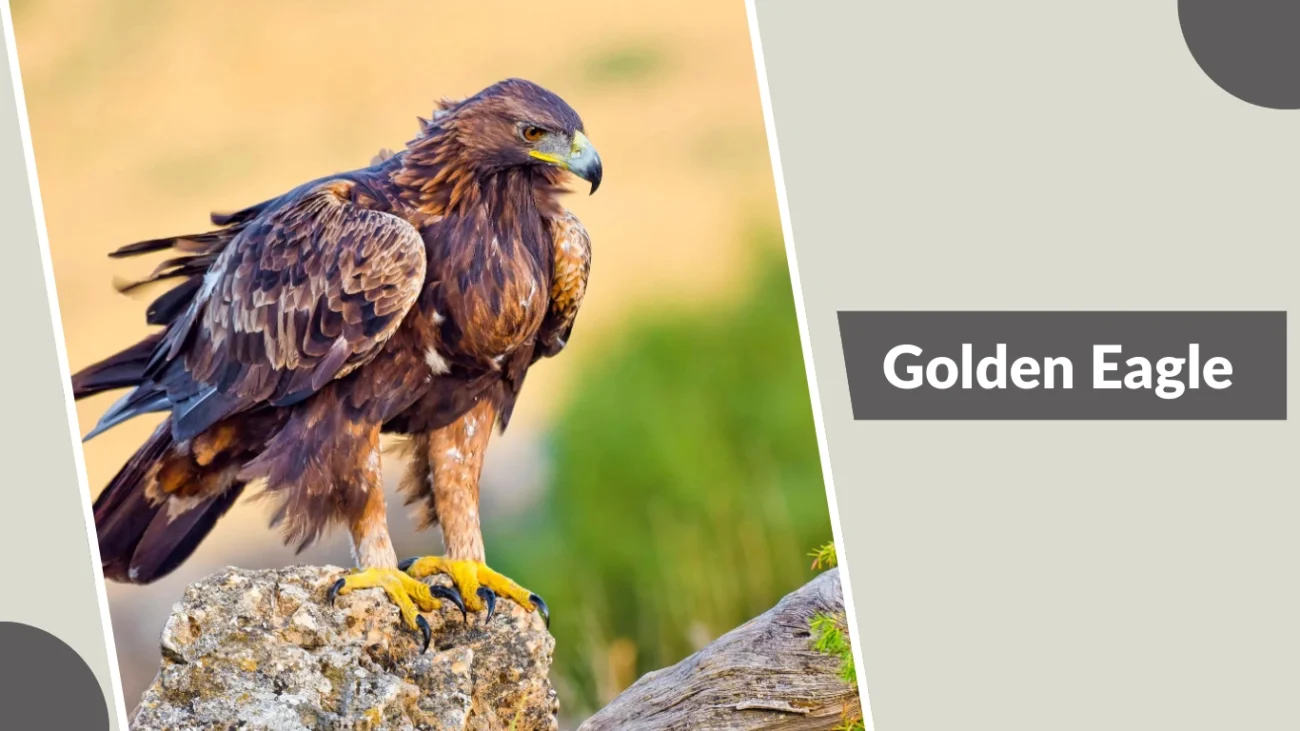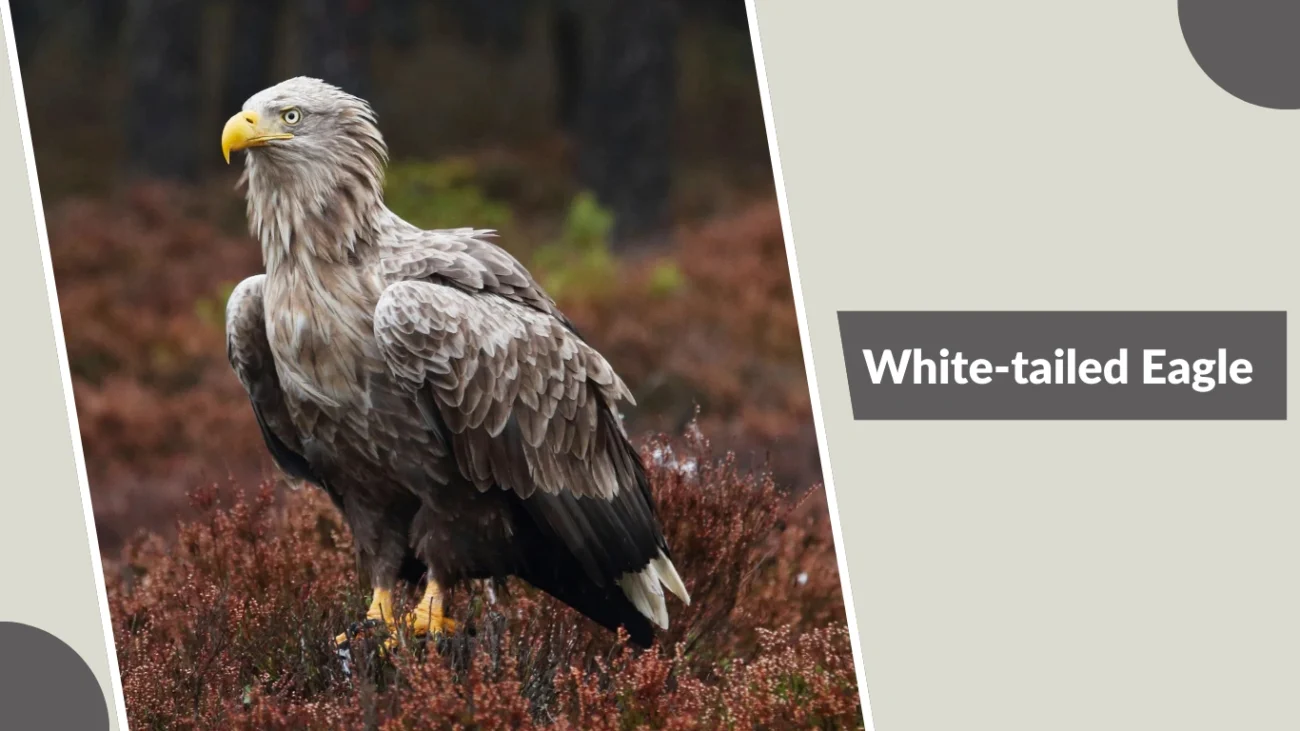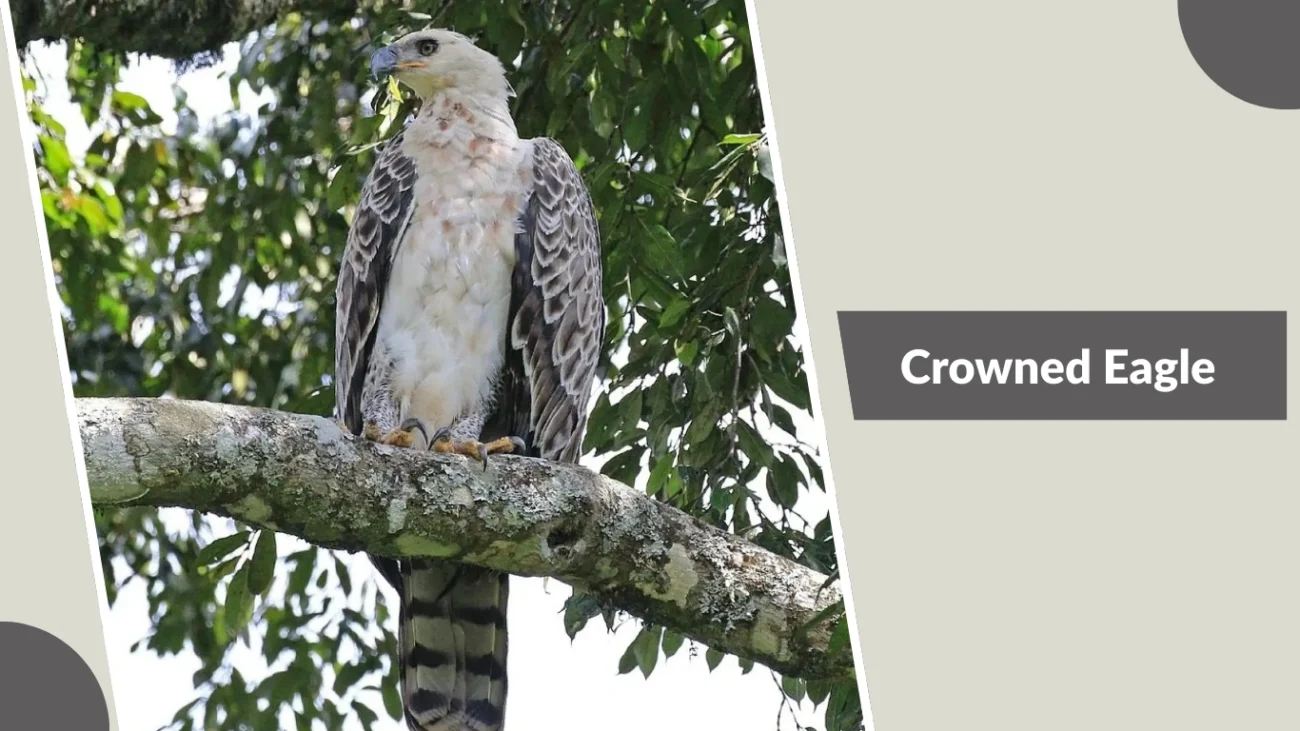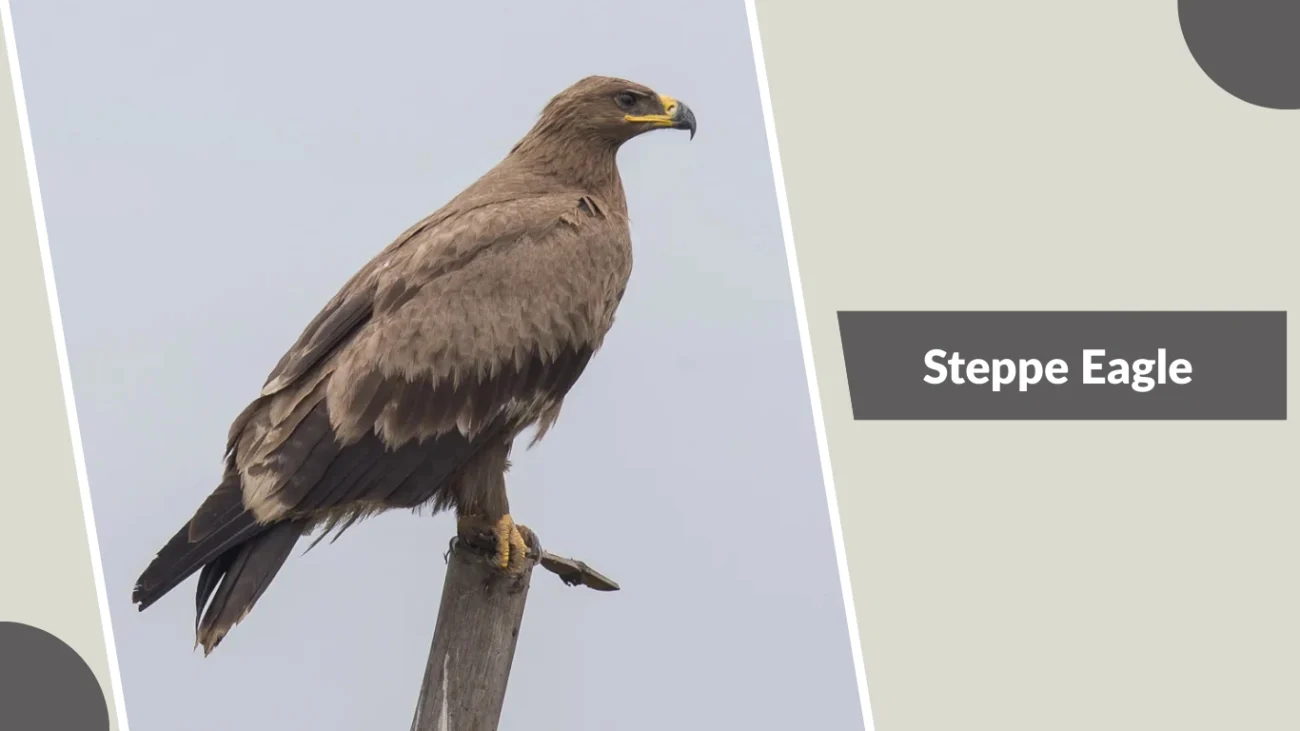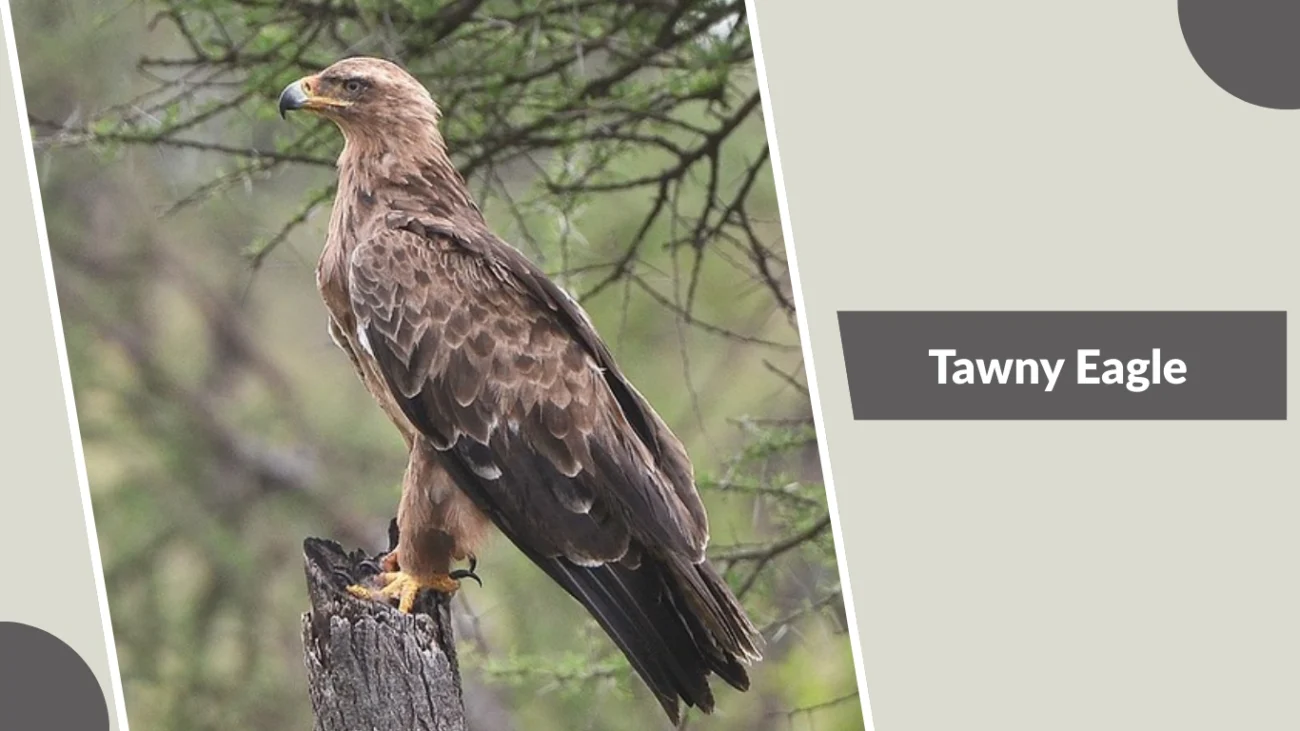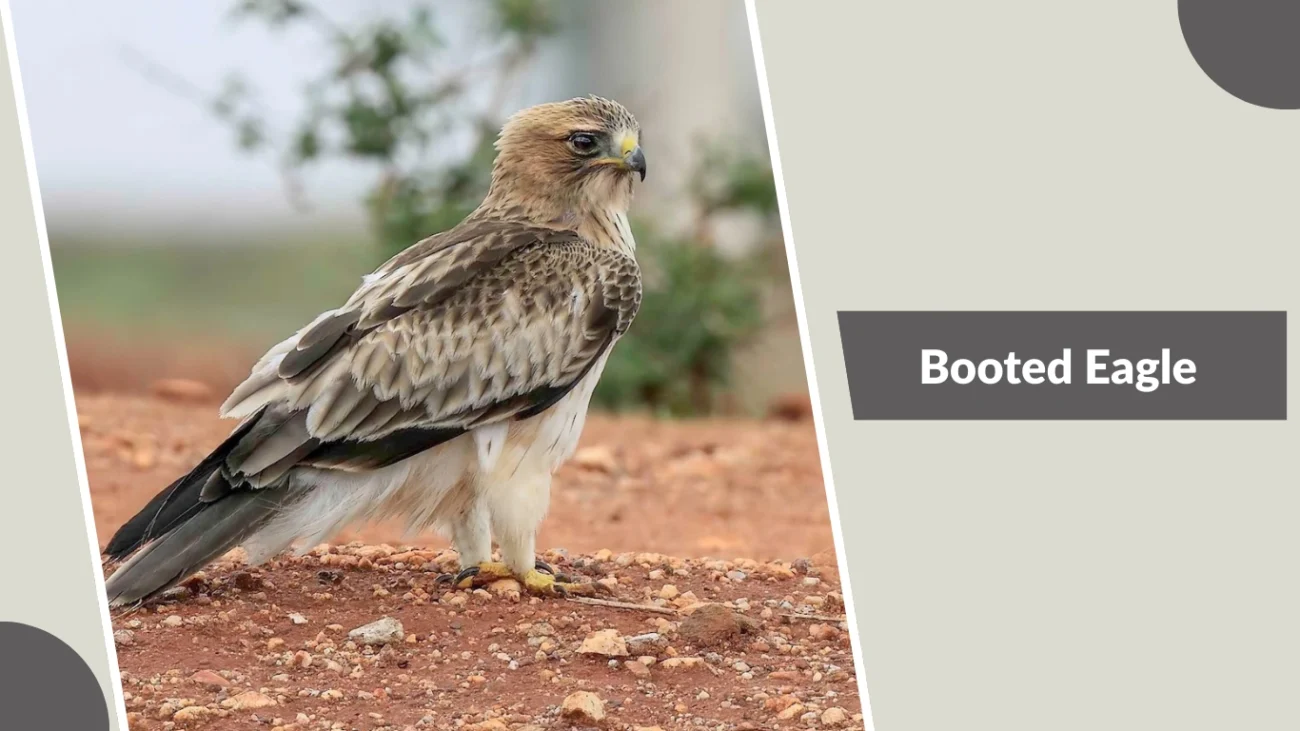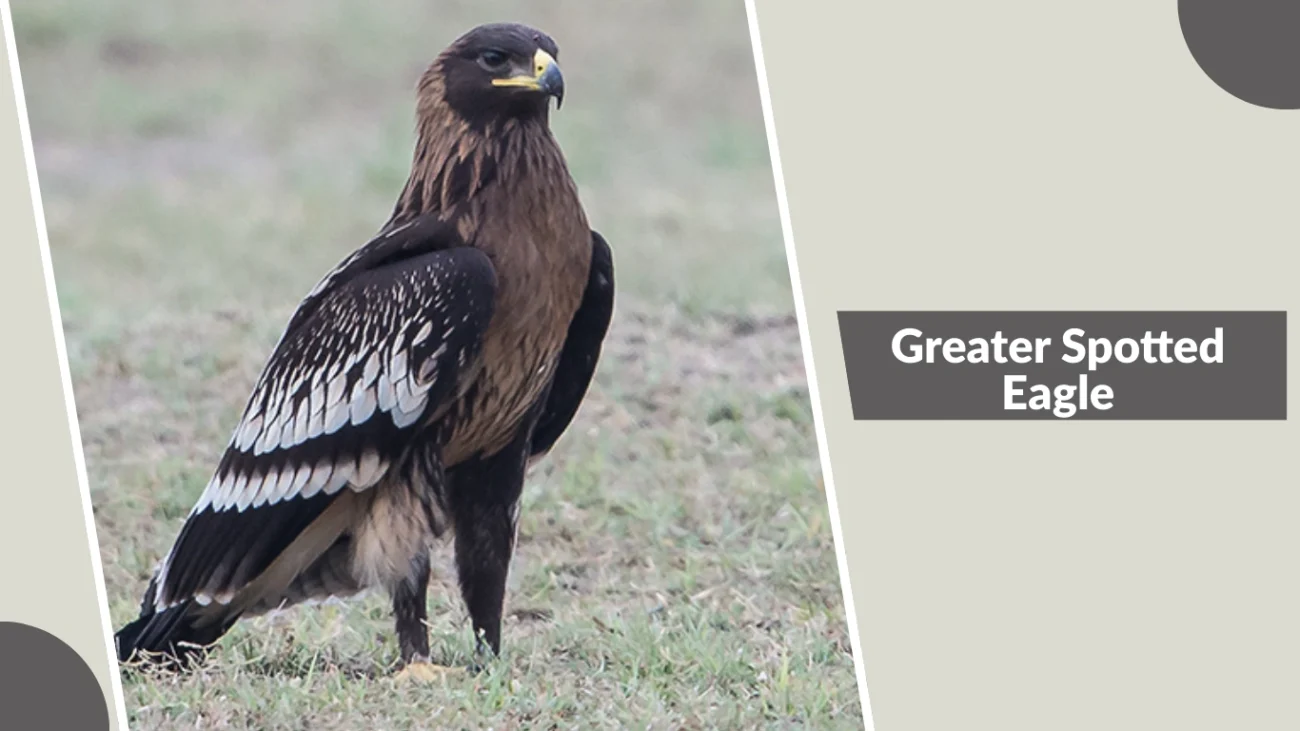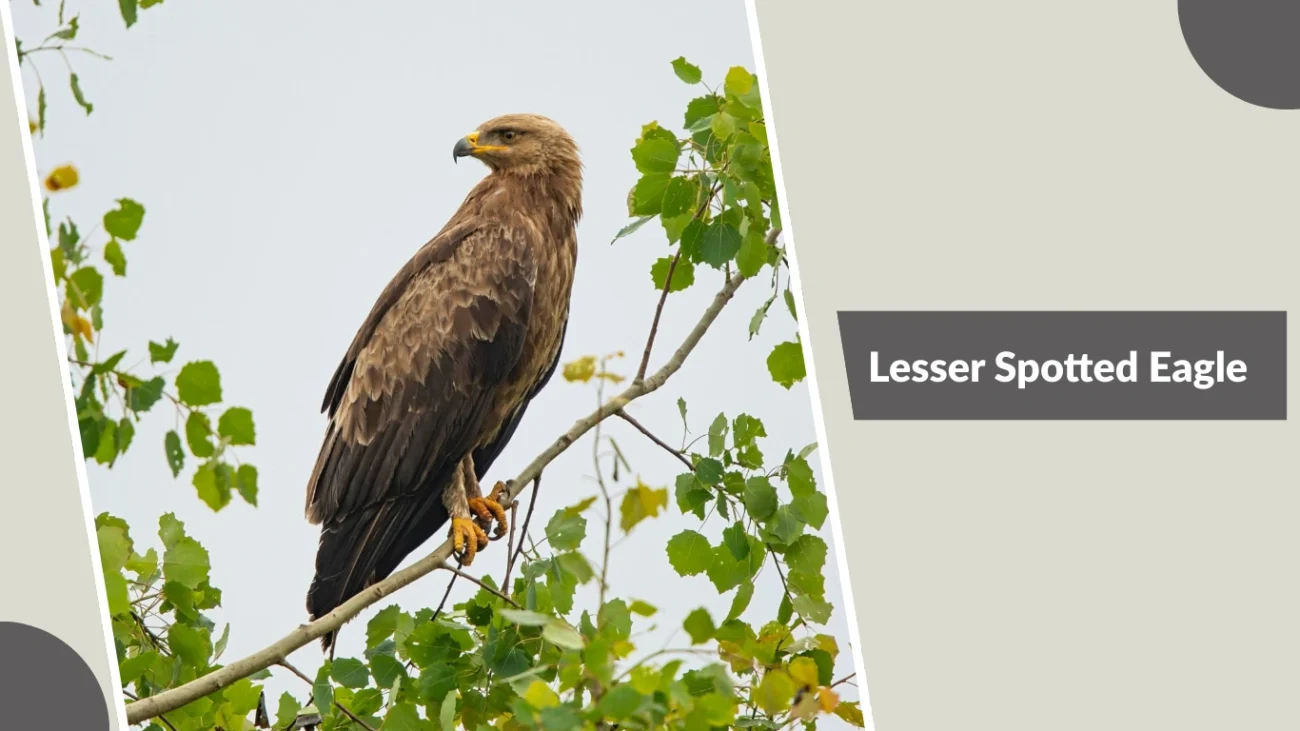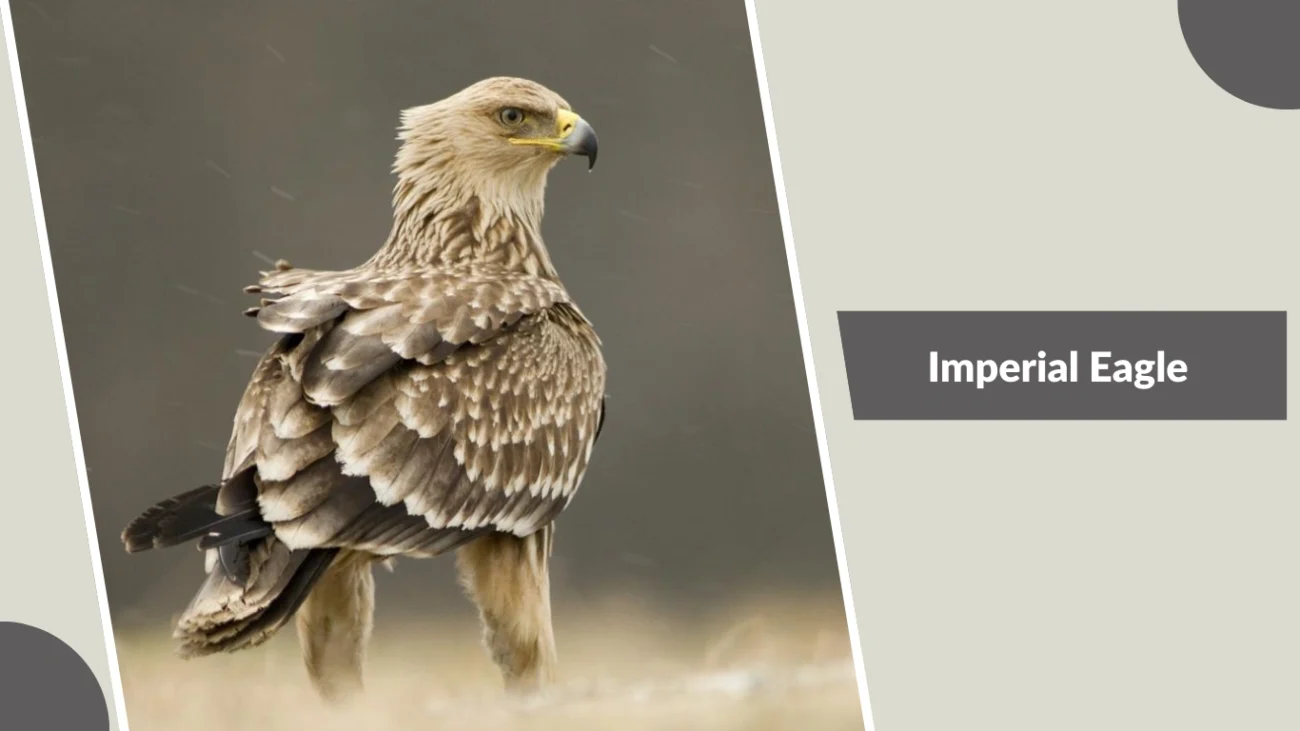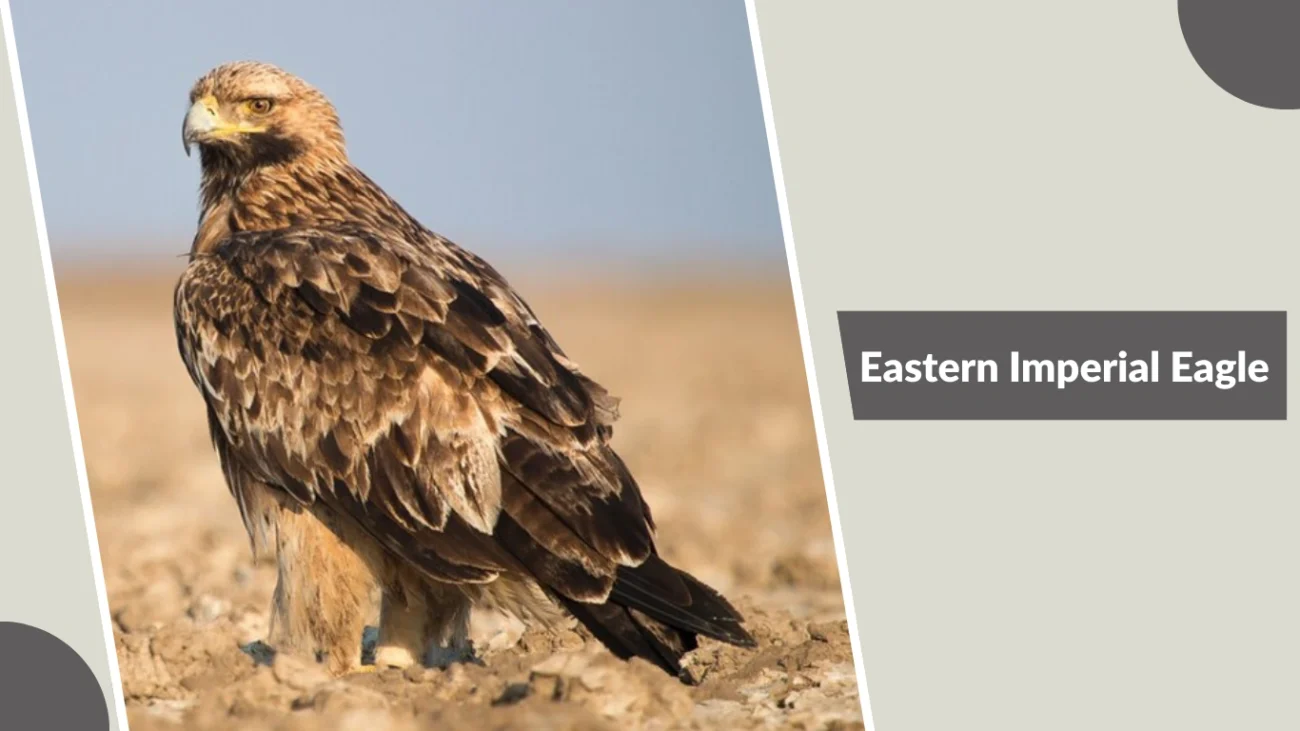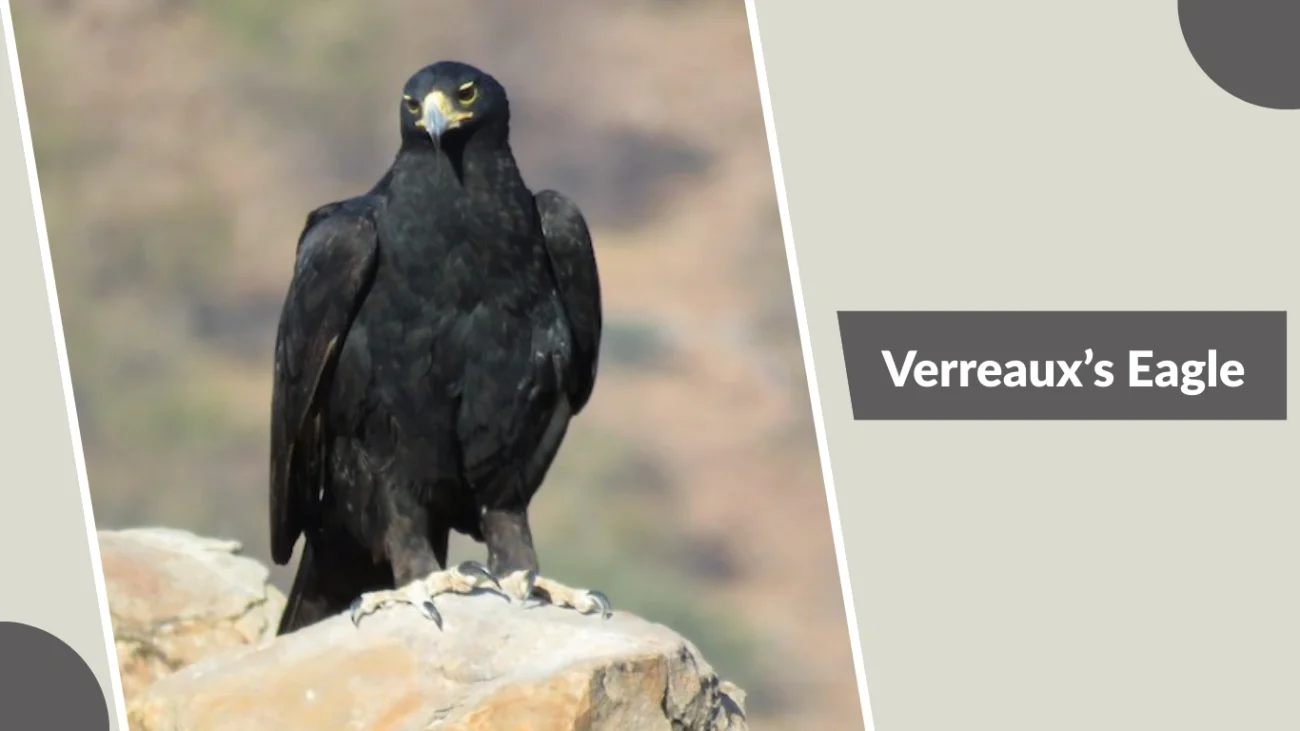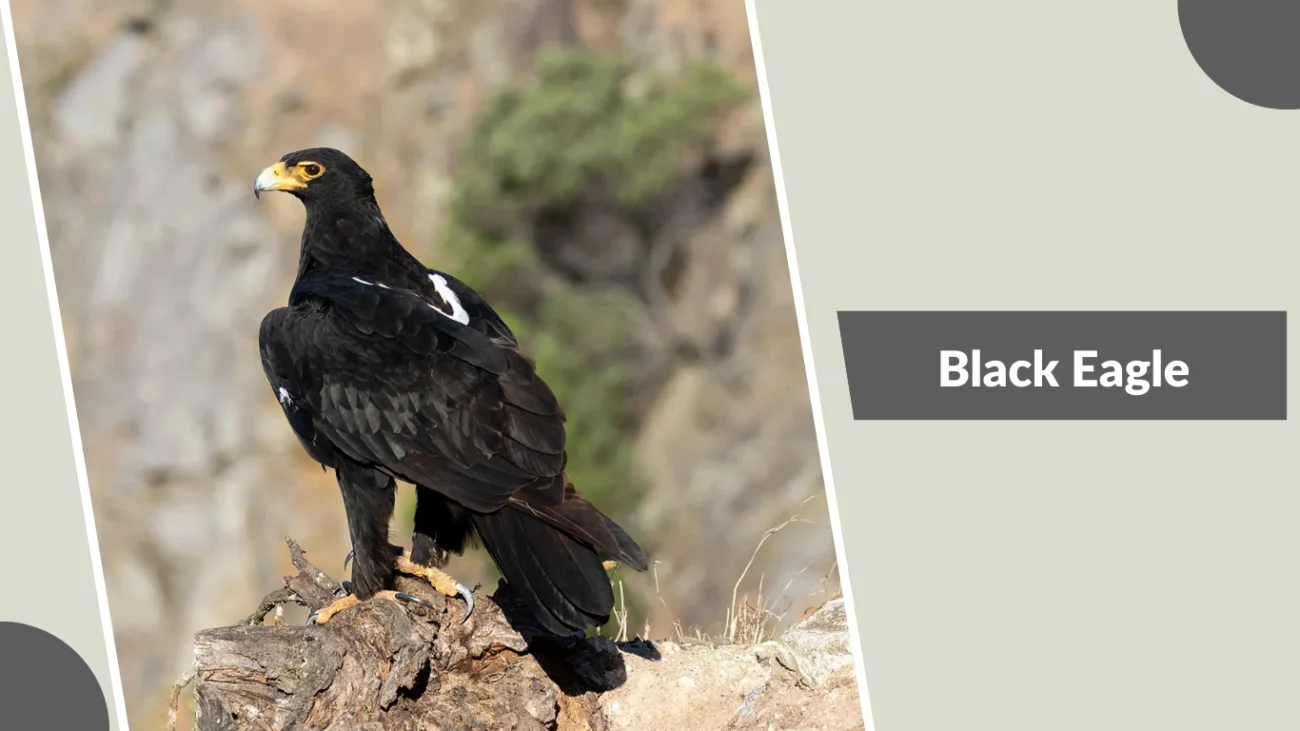Eagles are among the most majestic and powerful birds of prey, admired worldwide for their strength, keen eyesight, and remarkable hunting abilities. Found across every continent except Antarctica, each species has unique traits shaped by its habitat and diet. This guide explores 27 distinct types of eagles, detailing their appearance, distribution, and behaviors, offering a comprehensive reference for bird enthusiasts, researchers, and wildlife lovers alike.
1. Bald Eagle
The bald eagle (Haliaeetus leucocephalus) is a large bird of prey native to North America and is the national bird and symbol of the United States. Known for its striking white head and tail contrasting with a dark brown body, it is often seen soaring near large bodies of water where fish are abundant.
Identification
- Scientific Name: Haliaeetus leucocephalus
- Body Size: 70–102 cm (28–40 in) in length
- Wingspan: 1.8–2.3 m (5.9–7.5 ft)
- Color: White head and tail, dark brown body and wings, yellow beak and talons
- Eye Color: Pale yellow in adults, darker in juveniles
Habitat and Distribution
Bald eagles are found throughout most of North America, from Alaska and Canada to northern Mexico. They prefer habitats near coasts, rivers, lakes, and wetlands where food sources like fish, waterfowl, and small mammals are plentiful.
Behavior and Diet
They are powerful hunters and scavengers, feeding mainly on fish but also on birds, carrion, and small mammals. Bald eagles are known for their soaring flight, impressive vision, and large stick nests, which can be reused and added to for many years.
2. Golden Eagle
The golden eagle (Aquila chrysaetos) is one of the largest and most powerful birds of prey in the Northern Hemisphere. Renowned for its incredible hunting skills, speed, and agility, it has a rich brown plumage with golden feathers on the back of its head and neck, giving it its name.
Identification
- Scientific Name: Aquila chrysaetos
- Body Size: 66–102 cm (26–40 in) in length
- Wingspan: 1.8–2.34 m (5.9–7.7 ft)
- Color: Dark brown body, golden feathers on the head and nape
- Beak: Dark tip with a yellow cere
- Legs: Fully feathered down to the toes
Habitat and Distribution
Golden eagles inhabit open and semi-open areas such as mountains, hills, grasslands, and deserts. They are found across North America, Europe, Asia, and parts of North Africa, preferring regions with plenty of space for hunting.
Behavior and Diet
These eagles are skilled hunters capable of taking down large prey such as rabbits, hares, ground squirrels, and even young deer. They rely on their powerful talons and keen eyesight, often soaring high before diving at incredible speeds to catch prey.
3. White-tailed Eagle
The white-tailed eagle (Haliaeetus albicilla) is one of the largest birds of prey in Europe and Asia, often referred to as the “sea eagle” due to its preference for coastal and wetland habitats. It is notable for its massive wingspan and pale head, which becomes more prominent with age.
Identification
- Scientific Name: Haliaeetus albicilla
- Body Size: 66–94 cm (26–37 in) in length
- Wingspan: 1.78–2.45 m (5.8–8 ft)
- Color: Brown body with paler head and neck, white wedge-shaped tail in adults
- Beak: Large, strong, and yellow
- Legs: Featherless with powerful yellow talons
Habitat and Distribution
White-tailed eagles are found across northern Europe, Russia, and parts of Asia, often near large bodies of water such as lakes, rivers, and coastal areas. They prefer regions with abundant fish and waterfowl populations.
Behavior and Diet
They are opportunistic feeders, hunting fish, ducks, and small mammals, but also scavenging carrion. White-tailed eagles are known for their impressive aerial displays and for reusing huge stick nests year after year.
4. Steller’s Sea Eagle
The Steller’s sea eagle (Haliaeetus pelagicus) is one of the heaviest and most powerful eagles in the world, recognized for its massive size and striking appearance. Native to coastal regions of northeastern Asia, it is a rare but majestic sight in the wild.
Identification
- Scientific Name: Haliaeetus pelagicus
- Body Size: 85–105 cm (33–41 in) in length
- Wingspan: 1.95–2.5 m (6.4–8.2 ft)
- Color: Dark brown to black body with contrasting white shoulders, thighs, and tail
- Beak: Very large, thick, and bright yellow
- Legs: Featherless, strong, and yellow with powerful talons
Habitat and Distribution
Found mainly along the coasts and rivers of eastern Russia, particularly the Kamchatka Peninsula, with winter migrations to Japan, Korea, and China. They thrive in areas rich in fish and waterfowl.
Behavior and Diet
Their diet is dominated by fish, particularly salmon and trout, but they also hunt seabirds and scavenge carrion. Steller’s sea eagles are solitary hunters, often perching on tall trees or cliffs to scan for prey before swooping down with precision.
5. Philippine Eagle
The Philippine eagle (Pithecophaga jefferyi), also called the monkey-eating eagle, is one of the rarest and most critically endangered eagles in the world. Endemic to the Philippines, it is celebrated as the country’s national bird and is renowned for its extraordinary size, powerful build, and striking appearance.
Identification
- Scientific Name: Pithecophaga jefferyi
- Body Size: 86–102 cm (34–40 in) in length
- Wingspan: 2.0–2.2 m (6.6–7.2 ft)
- Color: Creamy white underparts with dark brown upperparts and wings
- Head: Crowned with a distinctive shaggy crest of long, light brown feathers
- Beak: Large, hooked, and bluish-gray
- Eyes: Piercing blue-gray, giving it a fierce gaze
Habitat and Distribution
The Philippine eagle inhabits tropical rainforests on the islands of Luzon, Leyte, Samar, and Mindanao. It requires large, undisturbed forest areas for hunting and nesting, often at elevations from lowland to montane zones.
Behavior and Diet
It is a solitary and territorial predator, feeding mainly on monkeys, large birds, snakes, flying lemurs, and small mammals. Philippine eagles are powerful hunters that use stealth and ambush tactics, swooping silently through dense forest canopy. Due to its slow breeding cycle—producing only one egg every two years—and severe deforestation, it is considered critically endangered, with fewer than 500 individuals remaining in the wild.
6. Harpy Eagle
The harpy eagle (Harpia harpyja) is one of the most powerful and visually striking eagles in the world, often referred to as the “rainforest giant.” It is renowned for its massive talons, powerful build, and bold black-and-white plumage. As an apex predator of tropical forests, it plays a vital role in maintaining ecological balance.
Identification
- Scientific Name: Harpia harpyja
- Body Size: 86–107 cm (34–42 in) in length
- Wingspan: 1.76–2.24 m (5.8–7.4 ft)
- Weight: Females up to 9 kg (20 lb), males smaller at around 5–6 kg
- Color: Black upperparts with white underparts and a black chest band
- Head: Gray with a double crest that can be raised into a crown-like display
- Talons: Exceptionally large—up to 13 cm (5 in)—strong enough to crush bone
Habitat and Distribution
The harpy eagle inhabits tropical lowland rainforests from southern Mexico through Central America to South America, with the largest populations found in Brazil, Peru, and Guyana. It prefers vast, undisturbed forest canopies for hunting and nesting.
Behavior and Diet
Harpy eagles are stealthy, ambush predators that rely on incredible strength to capture prey. Their diet includes sloths, monkeys, opossums, iguanas, and large birds. They perch silently in the canopy, using keen eyesight to detect movement before launching powerful, swift attacks.
Highly territorial, they require large hunting ranges. Because they breed slowly—raising just one chick every two to three years—habitat loss has a severe impact on their numbers.
7. Crowned Eagle
The crowned eagle (Stephanoaetus coronatus), often called the African crowned eagle, is considered the most powerful eagle in Africa relative to its size. Known for its bold, feathered crest and strikingly patterned plumage, it is a master of stealth and strength, capable of taking prey larger than itself.
Identification
- Scientific Name: Stephanoaetus coronatus
- Body Size: 80–99 cm (31–39 in) in length
- Wingspan: 1.51–1.81 m (4.9–5.9 ft)
- Weight: Females up to 4.7 kg (10 lb), males smaller at around 3.2 kg (7 lb)
- Color: Dark brown upperparts with white underparts heavily marked with black bars
- Head: Distinctive long feathered crest that can be raised, giving a “crowned” look
- Talons: Extremely large and powerful for their size, capable of subduing antelope
Habitat and Distribution
This eagle is found in sub-Saharan Africa, particularly in dense forests, woodlands, and riverine habitats. It prefers tall, mature forests that offer cover for ambush hunting and strong branches for nest building. Countries with strong populations include South Africa, Kenya, Tanzania, Uganda, and the Congo Basin.
Behavior and Diet
The crowned eagle is an ambush predator, relying on agility and powerful strikes rather than high-speed chases. It primarily hunts small to medium-sized mammals such as monkeys, bushbucks, and hyraxes. Its hunting style often involves perching quietly in dense foliage and launching a sudden, powerful attack.
They are also known for their loud, piercing calls that echo through the forest canopy. As monogamous birds, pairs maintain large territories, and their stick nests—often in the tallest trees—are used for many breeding seasons.
8. Steppe Eagle
The steppe eagle (Aquila nipalensis) is a large migratory eagle that thrives in open grasslands and semi-desert habitats. Known for its endurance and adaptability, it travels vast distances between breeding and wintering grounds, making it one of the most wide-ranging eagles in the Old World.
Identification
- Scientific Name: Aquila nipalensis
- Body Size: 60–89 cm (24–35 in) in length
- Wingspan: 1.65–2.15 m (5.4–7.1 ft)
- Weight: 2–4.9 kg (4.4–10.8 lb)
- Color: Dark brown overall with lighter brown flight feathers and a slightly paler nape
- Beak: Strong, hooked, with yellow cere and dark tip
- Legs: Fully feathered to the toes, ending in sharp, powerful talons
Habitat and Distribution
The steppe eagle breeds in open plains, steppes, and semi-arid deserts from Eastern Europe through Central Asia. In winter, it migrates to Africa, the Middle East, and the Indian subcontinent. It avoids dense forests, favoring open areas where it can spot prey from a distance.
Behavior and Diet
Steppe eagles are opportunistic hunters and scavengers. Their diet consists of small mammals like ground squirrels, hares, and voles, as well as birds, reptiles, and carrion. They are often seen soaring effortlessly over grasslands or perched on mounds scanning for prey.
During migration, they form loose groups and follow predictable routes, sometimes congregating in large numbers at prime feeding grounds. The species is currently listed as endangered due to habitat loss, power line collisions, and declining prey availability.
9. Tawny Eagle
The tawny eagle (Aquila rapax) is a medium-to-large bird of prey found across Africa, parts of the Middle East, and South Asia. Known for its adaptability and opportunistic feeding habits, it thrives in a variety of open and semi-open landscapes. Its earthy brown plumage provides excellent camouflage in dry grasslands and savannas.
Identification
- Scientific Name: Aquila rapax
- Body Size: 60–75 cm (24–30 in) in length
- Wingspan: 1.6–1.85 m (5.2–6.1 ft)
- Weight: 1.6–3 kg (3.5–6.6 lb)
- Color: Varies from pale sandy brown to dark chocolate brown
- Beak: Yellow cere with a black hooked tip
- Legs: Fully feathered, ending in strong talons
Habitat and Distribution
Tawny eagles inhabit open savannas, semi-deserts, grasslands, and agricultural lands. They are found widely in sub-Saharan Africa, with smaller populations in North Africa, the Middle East, and the Indian subcontinent. They prefer areas with scattered trees or cliffs for nesting but avoid dense forests.
Behavior and Diet
These eagles are versatile hunters and scavengers. Their diet includes small mammals, reptiles, birds, and carrion, often stealing food from other raptors or feeding alongside vultures at carcasses. They are strong fliers, capable of soaring for hours while scanning for prey.
Tawny eagles are monogamous, with pairs maintaining large territories year-round. Their adaptability to human-modified landscapes has allowed them to survive where other eagle species have declined, though they still face threats from poisoning, habitat loss, and power line collisions.
10. Booted Eagle
The booted eagle (Hieraaetus pennatus) is one of the smallest true eagles, but despite its size, it is a skilled and adaptable hunter. It is named “booted” because its legs are fully feathered down to the toes—a feature that provides extra protection and warmth. Agile and graceful in flight, it is known for its seasonal migrations across continents.
Identification
- Scientific Name: Hieraaetus pennatus
- Body Size: 40–50 cm (16–20 in) in length
- Wingspan: 1.1–1.32 m (3.6–4.3 ft)
- Weight: 0.5–1.3 kg (1.1–2.9 lb)
- Color Forms: Two morphs—pale (light brown with creamy underparts) and dark (overall dark brown)
- Beak: Short, hooked, with bluish-gray base and black tip
- Legs: Fully feathered (“booted”) ending in sharp talons
Habitat and Distribution
Booted eagles breed in southern Europe, North Africa, the Middle East, and parts of Central Asia. In winter, they migrate to sub-Saharan Africa and South Asia. They favor mixed woodland, forest edges, and open countryside with scattered trees or cliffs for nesting.
Behavior and Diet
They are opportunistic hunters, preying mainly on small birds, mammals, reptiles, and large insects. Booted eagles often hunt from a perch or in flight, diving swiftly on prey. Despite their smaller size, they are territorial and will fiercely defend nesting sites.
During migration, they travel long distances, often following thermal air currents to conserve energy. Their adaptability to various environments has helped maintain stable populations, although habitat destruction remains a potential threat.
11. Greater Spotted Eagle
The greater spotted eagle (Clanga clanga) is a medium-to-large migratory eagle recognized for its dark plumage and relatively broad wings. Although less showy than some of its relatives, it is a strong and efficient hunter, often found in wetlands and forested lowlands.
Identification
- Scientific Name: Clanga clanga
- Body Size: 59–71 cm (23–28 in) in length
- Wingspan: 1.57–1.81 m (5.2–5.9 ft)
- Weight: 1.6–3.2 kg (3.5–7 lb)
- Color: Dark brown overall with lighter spotting on the upper wings in adults; juveniles have more distinct white spots
- Beak: Yellow cere with a dark hooked tip
- Legs: Fully feathered, ending in strong yellow talons
Habitat and Distribution
The greater spotted eagle breeds in Eastern Europe and across parts of Russia and Central Asia, preferring swampy forests, river valleys, and marshes. In winter, it migrates to the Middle East, South Asia, and sub-Saharan Africa, favoring wetlands rich in prey.
Behavior and Diet
This eagle is primarily a predator of medium-sized birds and small mammals, but it will also take reptiles and carrion when available. It hunts by soaring above open areas or perching quietly near water.
Greater spotted eagles are solitary or found in small groups, but during migration and wintering, they can gather in loose flocks in rich feeding grounds. The species faces threats from wetland drainage, deforestation, and power line collisions, leading to a decline in population numbers.
12. Lesser Spotted Eagle
The lesser spotted eagle (Clanga pomarina) is a medium-sized migratory raptor closely related to the greater spotted eagle but generally smaller and lighter in build. Known for its long-distance migrations, it breeds in Europe and winters in Africa, making impressive journeys across continents.
Identification
- Scientific Name: Clanga pomarina
- Body Size: 55–65 cm (22–26 in) in length
- Wingspan: 1.43–1.68 m (4.7–5.5 ft)
- Weight: 1.3–2.5 kg (2.9–5.5 lb)
- Color: Uniform dark brown plumage with slightly paler flight feathers; juveniles have small pale spots on upper wings
- Beak: Yellow cere with a dark hooked tip
- Legs: Fully feathered to the toes, ending in sharp yellow talons
Habitat and Distribution
This eagle breeds across Eastern and Central Europe, often in mixed or deciduous forests near wetlands and meadows. It avoids dense, unbroken forest and open treeless plains, preferring a mix of cover and open ground. In winter, it migrates to eastern and southern Africa, following traditional flyways across the Middle East.
Behavior and Diet
The lesser spotted eagle’s diet is varied and opportunistic, including small mammals, birds, amphibians, reptiles, and large insects. It often hunts by soaring over open fields or perching quietly to scan for prey.
During migration, it travels in groups, sometimes with other raptors, and relies on thermal air currents to cover long distances efficiently. The species faces threats from habitat loss, illegal hunting during migration, and collision with power lines, though conservation programs in Europe are helping stabilize populations.
13. Martial Eagle
The martial eagle (Polemaetus bellicosus) is the largest eagle in Africa and one of the most powerful raptors in the world. Known for its extraordinary strength, incredible eyesight, and formidable hunting skills, it is an apex predator capable of taking down surprisingly large prey. Its sheer presence and commanding stature have earned it a legendary status among African birds of prey.
Identification
- Scientific Name: Polemaetus bellicosus
- Body Size: 78–96 cm (31–38 in) in length
- Wingspan: 2.1–2.6 m (6.9–8.5 ft) — among the largest of any eagle species
- Weight: Females up to 6.5 kg (14.3 lb), males smaller at around 3–4.7 kg (6.6–10.3 lb)
- Color: Dark brown upperparts, white underparts heavily spotted with black, and a dark brown head
- Eyes: Striking yellow irises set against a fierce facial expression
- Legs: Extremely powerful, feathered halfway down, with immense talons capable of exerting massive crushing force
Habitat and Distribution
Martial eagles are found throughout sub-Saharan Africa, preferring open savannas, lightly wooded areas, and semi-desert regions. They avoid dense rainforests and extreme desert environments, often selecting tall trees or rocky outcrops for nesting. Their territories can span over 100 square kilometers, requiring vast hunting grounds.
Behavior and Diet
These eagles are solitary and highly territorial hunters. They possess extraordinary eyesight—up to 3.5 times better than humans—which allows them to spot prey from great distances while soaring at high altitudes. Their diet is diverse, including medium-sized mammals such as hyraxes and young antelope, large birds like guineafowl and bustards, and even reptiles such as monitor lizards.
The martial eagle hunts with a combination of stealth, patience, and overwhelming force, often diving at high speeds to strike prey with devastating impact. Due to habitat loss, poisoning, and persecution by farmers, their numbers are declining, leading to a conservation status of Vulnerable.
14. Black-chested Buzzard-Eagle
The black-chested buzzard-eagle (Geranoaetus melanoleucus), despite its name, is a true eagle in size and power, though it shares some characteristics with large hawks. Native to South America, it is an imposing bird with broad wings and a commanding presence in mountainous regions and open landscapes.
Identification
- Scientific Name: Geranoaetus melanoleucus
- Body Size: 70–80 cm (27–31 in) in length
- Wingspan: 1.8–2.0 m (5.9–6.6 ft)
- Weight: 2.0–3.0 kg (4.4–6.6 lb)
- Color: Slate-gray upperparts, striking black chest band, and white underparts
- Tail: Short, white with a broad dark subterminal band
- Beak: Strong, black-tipped with yellow cere
- Legs: Yellow and powerful, suited for gripping and tearing prey
Habitat and Distribution
This eagle is widely distributed across South America, from Colombia and Venezuela down through the Andes to Argentina and Chile. It inhabits high-altitude grasslands, rocky slopes, scrublands, and open savannas. In some areas, it descends to lowland plains during winter in search of food.
Behavior and Diet
The black-chested buzzard-eagle is an active and opportunistic hunter. Its diet mainly consists of small to medium-sized mammals like rabbits and rodents, as well as birds, reptiles, and carrion. It often hunts by soaring at great heights before performing a steep dive to seize prey.
It is also known for its dramatic territorial flight displays, which include steep climbs and plunges. This species plays an important ecological role by controlling small mammal populations, but it can sometimes come into conflict with farmers who view it as a threat to livestock.
15. Wedge-tailed Eagle
The wedge-tailed eagle (Aquila audax) is Australia’s largest bird of prey and one of the biggest eagles in the world. It is instantly recognizable by its long, diamond-shaped tail and massive wingspan, making it a dominant aerial hunter across the Australian continent.
Identification
- Scientific Name: Aquila audax
- Body Size: 85–106 cm (33–42 in) in length
- Wingspan: 2.3–2.85 m (7.5–9.4 ft) — among the longest of any eagle species
- Weight: 3–5.3 kg (6.6–11.7 lb), with females being larger than males
- Color: Dark brown to black, with lighter brown markings in juveniles; adults often appear almost black
- Tail: Long and wedge-shaped, unique among eagles
- Beak: Large, hooked, pale cream with a bluish-gray base
- Legs: Fully feathered, ending in sharp talons capable of handling large prey
Habitat and Distribution
The wedge-tailed eagle is found throughout mainland Australia, Tasmania, and southern New Guinea. It inhabits a wide range of environments, including open woodlands, grasslands, mountains, arid zones, and even urban fringes. It requires tall trees or rocky cliffs for nesting, but its hunting range is vast and adaptable.
Behavior and Diet
Wedge-tailed eagles are versatile hunters and scavengers. Their diet includes rabbits, hares, kangaroo young, reptiles, and birds, along with carrion from roadkill and livestock carcasses. They are known for their soaring flight, often riding thermals for hours with minimal wingbeats while scanning for prey.
Pairs are monogamous and maintain large territories, reusing massive stick nests—sometimes over 2 meters across—for many years. While revered as a symbol of the wild, they have historically been persecuted by farmers who feared for livestock, though studies show they rarely take healthy stock.
With improved conservation awareness, wedge-tailed eagle populations remain stable, though they still face threats from habitat loss, poisoning, and collisions with wind turbines and power lines.
16. Imperial Eagle
The imperial eagle (Aquila heliaca), also known as the eastern imperial eagle, is a large and regal bird of prey admired for its commanding appearance and soaring flight. It is considered a symbol of strength in many cultures and has been featured in heraldry for centuries.
Identification
- Scientific Name: Aquila heliaca
- Body Size: 68–90 cm (27–35 in) in length
- Wingspan: 1.9–2.2 m (6.2–7.2 ft)
- Weight: 2.5–4.5 kg (5.5–9.9 lb), with females larger than males
- Color: Dark brown body with lighter golden-brown head and nape
- Markings: Distinctive white shoulder patches visible in flight
- Beak: Strong, dark-tipped with a yellow cere
- Legs: Fully feathered down to the toes, ending in powerful talons
Habitat and Distribution
Imperial eagles breed in Eastern Europe, Central Asia, and parts of the Middle East. They favor open plains, steppe regions, and lightly wooded areas with tall trees or cliffs for nesting. In winter, they migrate south to Africa, the Arabian Peninsula, and South Asia, following prey availability.
Behavior and Diet
Imperial eagles are versatile hunters, feeding on medium-sized mammals such as hares and ground squirrels, as well as birds, reptiles, and carrion. They often hunt from a perch, scanning the area before launching a swift attack.
They are monogamous and fiercely territorial, maintaining the same nesting sites for years. Their large stick nests are usually placed high in trees or on cliffs, offering a commanding view of their territory.
The species faces threats from habitat loss, illegal hunting, and collisions with power lines, though conservation programs in several countries are helping populations recover.
17. Eastern Imperial Eagle
The eastern imperial eagle (Aquila heliaca heliaca) is a majestic subspecies or regional form of the imperial eagle, distinguished by slight variations in plumage and its breeding range. Revered in many cultures, it has historically appeared on coats of arms and royal insignia. Its regal posture and wide, commanding wingspan make it one of the most impressive eagles in Eurasia.
Identification
- Scientific Name: Aquila heliaca heliaca
- Body Size: 70–90 cm (27–35 in) in length
- Wingspan: 1.9–2.3 m (6.2–7.5 ft)
- Weight: 2.5–4.5 kg (5.5–9.9 lb)
- Color: Dark brown body with a contrasting golden-brown head and neck
- Markings: Distinctive white “shoulder epaulettes” visible in flight, especially in adults
- Beak: Powerful, hooked, with a yellow cere and dark tip
- Legs: Fully feathered to the toes with strong talons
Habitat and Distribution
The eastern imperial eagle breeds across Eastern Europe, Russia, Kazakhstan, and parts of the Middle East. It favors open plains, agricultural areas with scattered trees, and steppe regions near rivers or lakes. In winter, it migrates south to Africa, the Arabian Peninsula, and South Asia, sometimes traveling thousands of kilometers.
Behavior and Diet
Eastern imperial eagles are opportunistic predators and scavengers. They feed on medium-sized mammals such as ground squirrels, hares, and marmots, as well as birds, reptiles, and carrion. They are patient hunters, often perching quietly for extended periods before launching a swift attack.
They are monogamous and fiercely territorial, returning to the same nesting sites for many years. Their large stick nests are often built high in trees or on cliffs, offering a clear vantage point over their hunting grounds.
Despite their adaptability, eastern imperial eagles face threats from habitat destruction, electrocution from power lines, and illegal shooting during migration, leading to their classification as Vulnerable on the IUCN Red List.
18. Bonelli’s Eagle
Bonelli’s eagle (Aquila fasciata) is a medium-to-large bird of prey admired for its agility, speed, and striking plumage. Unlike many larger eagles that rely on soaring for long periods, Bonelli’s eagle is an active and versatile hunter, often performing rapid, acrobatic flights to pursue prey in rugged terrain.
Identification
- Scientific Name: Aquila fasciata
- Body Size: 55–74 cm (22–29 in) in length
- Wingspan: 1.5–1.8 m (4.9–5.9 ft)
- Weight: 1.5–3 kg (3.3–6.6 lb), with females larger than males
- Color: Adults have dark brown upperparts, white underparts with dark streaking, and a distinct white patch on the back
- Tail: Gray with a broad black subterminal band
- Beak: Powerful, hooked, dark at the tip with a bluish base
- Legs: Fully feathered to the toes, with strong yellow talons
Habitat and Distribution
Bonelli’s eagle inhabits hilly and mountainous regions, rocky gorges, and open woodlands. Its range covers southern Europe, North Africa, the Middle East, the Indian subcontinent, and parts of Southeast Asia. It favors areas with a combination of cliffs for nesting and open spaces for hunting.
Behavior and Diet
This eagle is an aggressive and precise hunter, preying primarily on medium-sized birds such as pigeons and partridges, as well as mammals like rabbits, hares, and occasionally reptiles. It hunts both from soaring flight and from concealed perches, diving swiftly at prey with remarkable speed.
Bonelli’s eagles are territorial and monogamous, maintaining the same nesting sites—often cliff ledges or tall trees—for years. They face threats from habitat loss, persecution, and electrocution from power lines, leading to population declines in some regions. Conservation measures, including habitat protection and nest monitoring, are helping stabilize certain populations.
19. Verreaux’s Eagle
Verreaux’s eagle (Aquila verreauxii), also known as the black eagle, is a strikingly beautiful and powerful raptor of Africa’s mountainous and rocky landscapes. Its almost entirely black plumage, contrasted by a bold white “V” on its back and a white rump, makes it instantly recognizable in flight. This eagle is highly specialized, with a hunting strategy adapted to its preferred prey.
Identification
- Scientific Name: Aquila verreauxii
- Body Size: 75–96 cm (30–38 in) in length
- Wingspan: 1.81–2.2 m (5.9–7.2 ft)
- Weight: 3–5.8 kg (6.6–12.8 lb), with females larger than males
- Color: Glossy black plumage with a distinctive white “V” on the back and a white rump patch visible in flight
- Beak: Strong, black-tipped with a yellow cere
- Legs: Fully feathered with strong yellow talons
Habitat and Distribution
Verreaux’s eagle is found mainly in eastern and southern Africa, inhabiting mountainous regions, rocky hills, escarpments, and cliffs. It favors habitats with abundant populations of rock hyraxes, which form the bulk of its diet. Countries where it is common include South Africa, Namibia, Ethiopia, and Kenya.
Behavior and Diet
This eagle is a specialized predator, with up to 90% of its diet consisting of rock hyraxes. It hunts cooperatively in pairs, often soaring high above cliffs before making swift, controlled stoops toward prey. The precision of its hunting technique allows it to catch fast and agile quarry on steep, rocky slopes.
Verreaux’s eagles are highly territorial, with pairs often defending the same rocky cliffs for years. Their nests, made of sticks and lined with greenery, are built on inaccessible cliff ledges. They are considered stable in population in remote areas, but human disturbance and habitat changes can impact local numbers.
20. Black Eagle
The black eagle (Ictinaetus malaiensis) is a large, elegant raptor native to the forests of South and Southeast Asia. Despite its name, it is not closely related to Verreaux’s eagle, but instead belongs to a unique genus. Known for its graceful, almost effortless flight over forest canopies, the black eagle is a master of aerial maneuvering.
Identification
- Scientific Name: Ictinaetus malaiensis
- Body Size: 70–80 cm (27–31 in) in length
- Wingspan: 1.5–1.8 m (4.9–5.9 ft)
- Weight: 1–1.6 kg (2.2–3.5 lb)
- Color: Entirely black or very dark brown, with golden or brownish tinge in sunlight
- Beak: Hooked, dark-tipped with a yellow cere
- Legs: Yellow, unfeathered below the knee, ending in sharp talons
- Tail: Long and slightly rounded, aiding in agile flight
Habitat and Distribution
The black eagle inhabits dense tropical and subtropical forests, hill forests, and mountainous woodlands. It is distributed from the Indian subcontinent through Southeast Asia, extending to southern China, Indonesia, and the Philippines. It prefers large forest tracts with minimal human disturbance.
Behavior and Diet
Unlike many eagles that rely on open hunting grounds, the black eagle specializes in foraging within the forest canopy. It feeds mainly on birds, eggs, small mammals, and reptiles, often raiding nests mid-flight. Its slow, buoyant wingbeats and incredible agility allow it to navigate through dense foliage with ease.
Black eagles are monogamous, with pairs often seen soaring together above the treetops. Their nests are built high in tall trees and are reused year after year, being repaired and enlarged each breeding season. While not globally threatened, deforestation poses a growing risk to their populations in certain regions.
21. African Fish Eagle
The African fish eagle (Haliaeetus vocifer) is one of the most iconic birds of prey in Africa, instantly recognizable by its bold plumage and distinctive, ringing call. Often referred to as the “voice of Africa,” its cry is a familiar sound near many of the continent’s rivers and lakes.
Identification
- Scientific Name: Haliaeetus vocifer
- Body Size: 63–75 cm (25–30 in) in length
- Wingspan: 2.0–2.4 m (6.6–7.9 ft)
- Weight: 2–3.6 kg (4.4–7.9 lb), with females larger than males
- Color: White head, breast, and tail; chestnut-brown body and wings; black flight feathers
- Beak: Strong, hooked, yellow with a black tip
- Legs: Yellow, unfeathered, ending in rough-textured talons adapted for grasping slippery fish
Habitat and Distribution
African fish eagles inhabit freshwater lakes, large rivers, dams, and coastal lagoons throughout sub-Saharan Africa. They are especially common in regions such as the Rift Valley lakes, the Okavango Delta, Lake Victoria, and the Zambezi River. They require large water bodies with an abundant fish supply and tall perches or trees for nesting.
Behavior and Diet
These eagles are master fishers, often seen perched near the water before swooping down to snatch fish from the surface with their talons. They primarily eat fish but will also take waterbirds, small mammals, and carrion when opportunities arise. African fish eagles are highly territorial and typically seen in monogamous pairs.
Their nests—large stick platforms lined with greenery—are built in tall trees near water and reused for multiple breeding seasons. Beyond their hunting skill, they are celebrated for their piercing, yodeling call, which is often described as the soundtrack of African waterways.
22. Grey-headed Fish Eagle
The grey-headed fish eagle (Haliaeetus ichthyaetus) is a striking raptor of South and Southeast Asia, renowned for its close association with rivers, lakes, and coastal habitats. Its broad wings, heavy build, and distinctive plumage make it a specialist fish-hunter and an important indicator of healthy wetland ecosystems.
Identification
- Scientific Name: Haliaeetus ichthyaetus
- Body Size: 61–75 cm (24–30 in) in length
- Wingspan: 1.55–1.8 m (5.1–5.9 ft)
- Weight: 1.6–2.7 kg (3.5–6 lb)
- Color: Pale grey head and neck, rich brown body, and white belly and thighs
- Tail: Short, white with a broad black terminal band
- Beak: Strong, hooked, dark grey with yellow cere
- Legs: Unfeathered and yellow, with rough pads on talons for gripping fish
Habitat and Distribution
The grey-headed fish eagle is widely distributed from the Indian subcontinent through Southeast Asia to Indonesia and the Philippines. It inhabits forested lakes, large rivers, estuaries, and coastal lagoons, preferring areas with abundant fish and mature trees for nesting.
Behavior and Diet
As a fish specialist, it hunts by swooping down from a perch or in low flight over water to snatch fish with its talons. Its diet is almost exclusively aquatic, but it may occasionally take waterbirds, reptiles, or carrion.
Pairs are strongly territorial, often staying in the same area year-round. Their nests are large stick structures placed in tall trees, reused and added to over many breeding seasons.
The species is classified as Near Threatened due to wetland destruction, overfishing, and human disturbance, but it remains relatively common in protected wetland areas.
23. Pallas’s Fish Eagle
Pallas’s fish eagle (Haliaeetus leucoryphus), also called the Pallas’s sea eagle or band-tailed fish eagle, is a large, rare raptor of Asia’s wetlands and riverine ecosystems. Distinguished by its striking tail band and contrasting body colors, it is a specialized fish predator and an important indicator of healthy freshwater habitats.
Identification
- Scientific Name: Haliaeetus leucoryphus
- Body Size: 72–84 cm (28–33 in) in length
- Wingspan: 1.8–2.1 m (5.9–6.9 ft)
- Weight: 2–3.7 kg (4.4–8.2 lb)
- Color: Dark brown upperparts, pale buff head and neck, and white lower belly and thighs
- Tail: White with a bold black subterminal band, making it highly distinctive in flight
- Beak: Large, hooked, grey with yellow cere
- Legs: Bare, yellow, and equipped with rough pads for gripping slippery prey
Habitat and Distribution
This eagle is found in South Asia and parts of Central and Southeast Asia, with its range including northern India, Nepal, Bangladesh, Myanmar, and sporadic areas in Central Asia. It inhabits large freshwater lakes, wide rivers, marshlands, and reservoirs, typically in lowland regions.
Behavior and Diet
Pallas’s fish eagle feeds predominantly on fish, capturing them in shallow water by swooping down from a perch or low flight. It may also take waterfowl, reptiles, and carrion when opportunities arise.
It is generally solitary or seen in pairs, often perching on tall trees near water. Nests are large stick platforms built high in riverside trees and reused year after year.
The species is listed as Endangered on the IUCN Red List, with major threats including wetland destruction, overfishing, pollution, and disturbance at nesting sites. Conservation efforts are focusing on wetland protection and community-based awareness programs to safeguard its remaining populations.
24. White-bellied Sea Eagle
The white-bellied sea eagle (Haliaeetus leucogaster) is a large and majestic coastal raptor found throughout the Indo-Pacific region. Its striking white-and-grey plumage, commanding size, and soaring flight make it one of the most recognizable eagles in its range. It plays a vital ecological role in maintaining healthy fish and seabird populations.
Identification
- Scientific Name: Haliaeetus leucogaster
- Body Size: 70–85 cm (28–33 in) in length
- Wingspan: 1.78–2.2 m (5.8–7.2 ft)
- Weight: 2.5–4.5 kg (5.5–9.9 lb), females larger than males
- Color: White head, breast, and underparts; grey wings and back; wedge-shaped tail white on both sides
- Beak: Powerful, hooked, grey with yellow cere
- Legs: Yellow, unfeathered, with strong talons designed for gripping slippery prey
Habitat and Distribution
The white-bellied sea eagle inhabits coastal regions, islands, estuaries, large rivers, and lakes. It is widely distributed from India, Southeast Asia, and Australia to Papua New Guinea and parts of the Pacific Islands. In Australia, it is found across almost the entire coastline and many inland waterways.
Behavior and Diet
This eagle is a skilled hunter and scavenger, feeding mainly on fish and waterbirds. It captures fish either by swooping down to snatch them from the water surface or by stealing prey from other birds. It is also known to eat reptiles, crustaceans, and carrion.
White-bellied sea eagles are often seen soaring high above the coast, using thermal currents to patrol their territory. They are monogamous and maintain large stick nests—often placed in tall trees or cliff edges—reusing and expanding them over many years.
While the species is generally secure, local populations can be threatened by habitat loss, pollution, and disturbance at nesting sites.
25. Short-toed Snake Eagle
The short-toed snake eagle (Circaetus gallicus) is a medium-to-large raptor specialized in hunting reptiles, particularly snakes, which make up the majority of its diet. Known for its piercing golden eyes, upright posture, and ability to hover in place while scanning the ground, it is one of the most skilled reptile hunters among eagles.
Identification
- Scientific Name: Circaetus gallicus
- Body Size: 59–70 cm (23–28 in) in length
- Wingspan: 1.62–1.85 m (5.3–6.1 ft)
- Weight: 1.2–2.3 kg (2.6–5 lb)
- Color: Pale underparts with brown streaking, dark brown upperparts, and a white throat
- Head: Large and rounded with striking golden-yellow eyes
- Beak: Short, hooked, black-tipped with yellow cere
- Legs: Bare and heavily scaled for protection against snake bites
Habitat and Distribution
This eagle is found across southern Europe, North Africa, the Middle East, and into Central and South Asia. It prefers open woodland, scrubland, cultivated areas, and semi-arid habitats where snakes are abundant. It generally avoids dense forests and treeless deserts.
Behavior and Diet
The short-toed snake eagle feeds mainly on snakes—both venomous and non-venomous—but will also take lizards and occasionally small mammals and birds. It often hunts by soaring high or hovering in place before diving rapidly to seize prey with its talons.
It is a solitary and territorial bird, nesting on tall trees or cliffs. Nests are relatively small compared to other eagles and are used for many years. Breeding pairs are monogamous, and the species typically raises a single chick per season.
While its population is stable in many areas, habitat destruction, persecution, and disturbance at nesting sites can locally threaten numbers.
26. Changeable Hawk-Eagle
The changeable hawk-eagle (Nisaetus cirrhatus), also known as the crested hawk-eagle, is a versatile and powerful forest raptor famous for its striking crest, intense gaze, and variable plumage. As its name suggests, its appearance can vary greatly between individuals, making it one of the most visually diverse eagle species.
Identification
- Scientific Name: Nisaetus cirrhatus
- Body Size: 59–72 cm (23–28 in) in length
- Wingspan: 1.2–1.6 m (3.9–5.2 ft)
- Weight: 1.2–2.5 kg (2.6–5.5 lb), with females larger than males
- Color: Highly variable; can range from light morphs with pale underparts to dark morphs with rich brown plumage
- Head: Distinctive long, narrow crest often held erect
- Beak: Dark-tipped, strong, and hooked with a yellow cere
- Legs: Fully feathered, ending in powerful talons
Habitat and Distribution
The changeable hawk-eagle is found throughout South and Southeast Asia, from the Indian subcontinent through Myanmar, Thailand, Malaysia, and Indonesia. It inhabits dense tropical forests, forest edges, wooded hills, and sometimes open country with scattered trees.
Behavior and Diet
This eagle is an agile and skilled hunter, preying on a variety of animals including birds, reptiles, and small mammals. It often hunts from a concealed perch, launching swift attacks with precision. The crest, when raised, gives it an imposing appearance, especially during courtship displays or territorial defense.
Changeable hawk-eagles are solitary or found in pairs, with large stick nests built high in trees. They are monogamous and often reuse nests, adding fresh greenery each breeding season.
The species is generally secure in many regions but faces localized threats from deforestation and illegal hunting, particularly in Southeast Asia where forest habitats are rapidly disappearing.
27. Mountain Hawk-Eagle
The mountain hawk-eagle (Nisaetus nipalensis), also known as Hodgson’s hawk-eagle, is a powerful and fierce raptor of Asia’s highlands and dense forests. Revered for its strength and striking appearance, it is considered one of the most formidable avian predators in its range, capable of tackling large and challenging prey.
Identification
- Scientific Name: Nisaetus nipalensis
- Body Size: 69–84 cm (27–33 in) in length
- Wingspan: 1.45–1.78 m (4.8–5.8 ft)
- Weight: 2–4.5 kg (4.4–9.9 lb), with females significantly larger than males
- Color: Dark brown upperparts with barred underparts; white throat and bold streaks on chest
- Head: Prominent, long crest that enhances its fierce look
- Beak: Strong, hooked, dark-tipped with a yellow cere
- Legs: Fully feathered to the toes, ending in robust yellow talons
Habitat and Distribution
The mountain hawk-eagle is found across the Himalayas, Northeast India, China, Taiwan, and parts of Southeast Asia, often inhabiting montane and submontane forests up to 3,000 meters in elevation. It favors mixed and evergreen forests, preferring areas with tall trees for nesting and open patches for hunting.
Behavior and Diet
This eagle is a highly skilled predator, preying on pheasants, pigeons, junglefowl, hares, squirrels, and even young deer. It hunts from a concealed perch or while soaring over forested slopes, using its speed and strength to overpower prey.
Mountain hawk-eagles are solitary and fiercely territorial, with pairs defending large forest territories. Their nests—built high in large trees or occasionally on cliffs—are made of sticks and lined with fresh greenery. They typically raise only one chick per breeding season.
The species is classified as Near Threatened due to habitat loss from logging, hunting pressures, and human disturbance, though it remains locally common in remote, well-forested regions.



